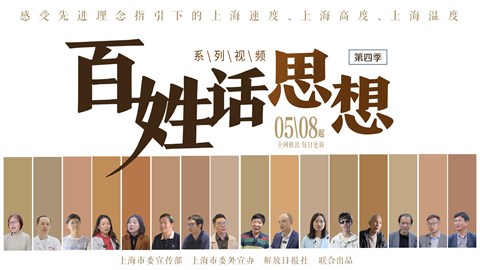Exhibition charts city's 100 years of progress

-

A visitor takes a photograph of a painting at the exhibition on Monday prior to its opening on Tuesday.
Jiang Xiaowei / SHINE -

The first visitors check out the exhibition on Monday.
Jiang Xiaowei / SHINE -

The first visitors check out the exhibition on Monday.
Jiang Xiaowei / SHINE -

The souvenir medals of the famous Songhu Battle against the Japanese invasion in Shanghai in 1932.
Chen Huizhi / SHINE -

A Chinese poster of the Hungarian film from 1950 “Goose Boy.”
Chen Huizhi / SHINE -

The "Anthology of Mao Zedong" as the prize on the National Gathering of Heroes in 1959.
Chen Huizhi / SHINE -

The paper tickets for Shanghai’s Metro Line 1, which opened in 1993.
Chen Huizhi / SHINE -

A jersey of Yao Ming, the world-famous Chinese basketball player from Shanghai.
Chen Huizhi / SHINE -

A part of the long painting of the life of residents in typical shikumen (stone gate) neighborhoods in Shanghai by famous local picture book painter He Youzhi.
Chen Huizhi / SHINE
Key events in the city’s history over the past 100 years are on show in a new exhibition which opens at Shanghai History Museum on Tuesday.
About 140 exhibits, 38 of them being seen in public for the first time, bear witness to the evolution of the city.
From the period before 1949, visitors can find souvenir medals of the Songhu Battle against the Japanese invasion in Shanghai in 1932, Japanese soldiers' swords and documentation of the "nation salvation bond" issued by the government of the Republic of China.
The early post-war period saw rapid development of the country’s manufacturing sector, with Shanghai a spearhead. A 555 brand table clock from the 1950s, a Phoenix bicycle from the 1960s and a valve radio from the same period are on display.
A Chinese poster for the 1950 Hungarian film “Goose Boy” shows early international film exchanges.
Some interesting exhibits from the later period include paper tickets for Shanghai’s Metro Line 1, which opened in 1993, and a jersey worn by of Yao Ming, the world-famous basketball player from Shanghai.
A painting of the life of residents in typical shikumen (stone gate) neighborhoods in Shanghai by local comic book artist He Youzhi delights visitors toward the end of the exhibition.
The exhibition on the first floor of the museum’s East Building on Nanjing Road W. is due to end on October 7.
Alongside the exhibition is an exhibition of the life of Chinese women from the late Qing Dynasty (1644-1912) to 1949.
The exhibition, held by the museum in cooperation with the China National Museum of Women and Children, tells the story of women’s emancipation and the fashions of the period.
Visitors can see shoes of women with bound feet and restored footage of a 1929 video of a Shanghai woman presenting the latest fashion for Chinese women in English.
This exhibition, which ends on July 18, is on the first floor of the museum’s West Building.















